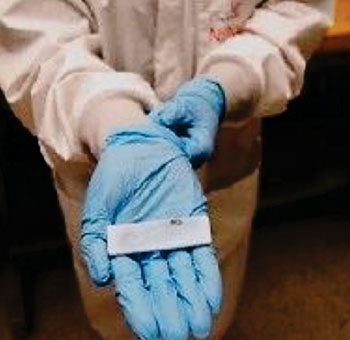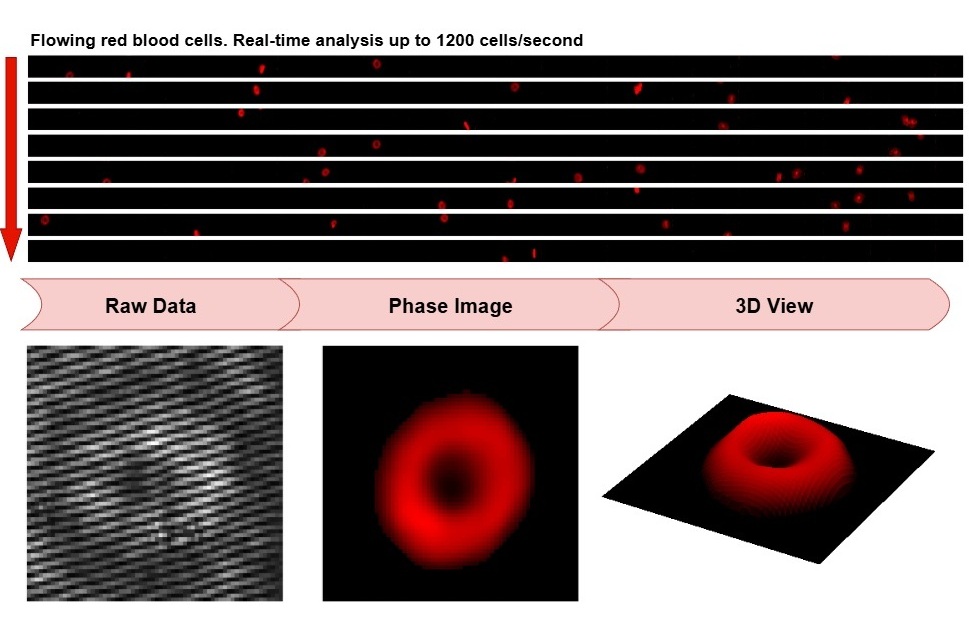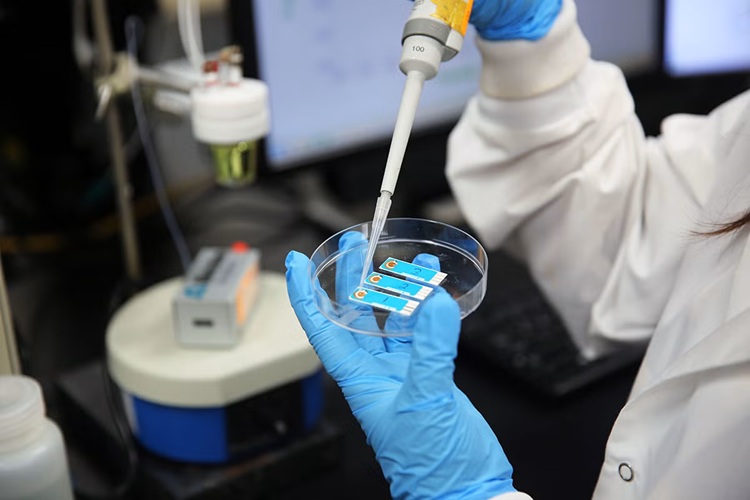Novel Technology Detects Blood Clots With Simple POC Test
By LabMedica International staff writers
Posted on 25 May 2016
Patients with cardiovascular disease, hypertension, atrial fibrillation, congestive heart failure, kidney disease and others who are at risk for blood clotting are especially vulnerable when blood-thinning medication levels get too weak or too strong.Posted on 25 May 2016
A test has been designed to give each patient the ability to keep a careful check on their levels by monitoring the changes that occur relative to previous tests. The technology can also be calibrated to a specific patient's condition. For example, a patient whose normal blood coagulation rate is significantly different from the general population because of a genetic disorder can use a tailor-made test kit that includes a different porous membrane.

Image: Nanofiber membranes inside a paper-porous test strip form the basis of blood clot test (Photo courtesy of the University of Cincinnati).
Scientists at the University of Cincinnati (OH, USA) used nanofiber membranes inside paper-based porous materials housed within a plastic cassette, which can quickly reveal the level of the blood's ability to clot, and all from the convenience of the patient's home with a simple finger stick to draw a drop of blood. While slight changes in the level of coagulation properties will occur normally depending on certain food intake and overall health conditions. A major change in levels immediately shows up on the paper-based test stick resulting in clotting patterns registering on one end of the spectrum or the other and will put up a red flag before any physiological trouble starts.
Andrew Steckl, PhD, a professor of electrical engineering, said, “We have developed a blood screening device for patients on medications like Coumadin, warfarin or other blood thinners who need to monitor their blood-clotting levels on a regular basis. Patients can soon monitor their blood coagulation characteristics from home quickly and painlessly before making needless trips to the laboratory or hospital. By identifying potential blood-clotting problems early enough, we hope to prevent potential injury or death and the exorbitant associated costs.” The study was presented at the 8th International Conference on Porous Media and Annual Meeting of the International Society for Porous Media, held May 9-12, in Cincinnati, OH, USA.
Related Links:
University of Cincinnati














